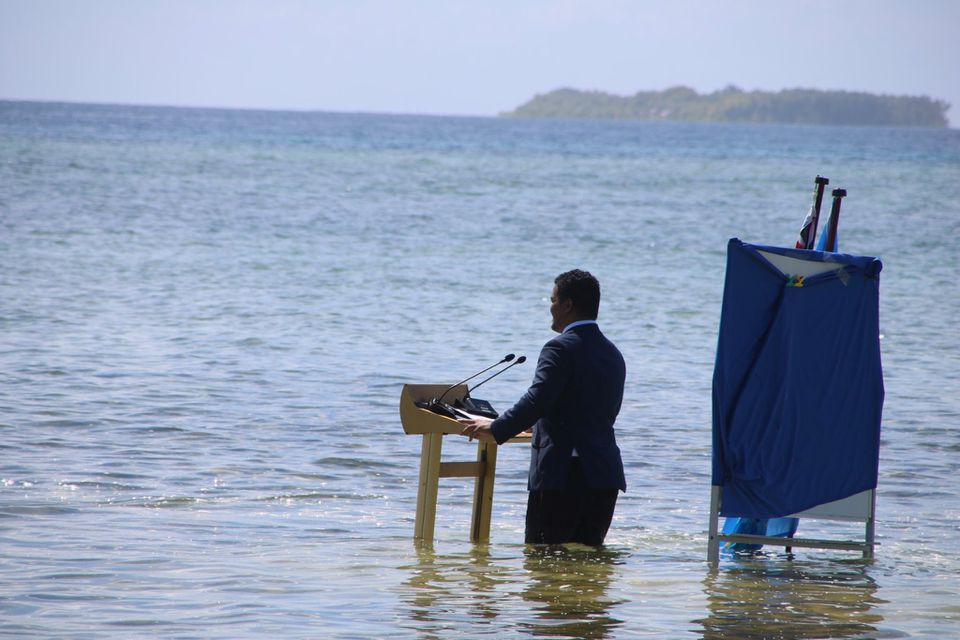At the halfway point of the 26th Conference of the Parties, aka COP 26, there’s been a huge increase in emissions of hot air, but despite the cynicism of certain Australian writers, there has been progress on climate change negotiations.
The meeting of global leaders, scientists, social society and lobbyists has seen hard-fought negotiations deliver very real agreements that leaders will take home and work to implement as domestic policies. There have been demonstrations on the street, with hundreds of people demanding more action and less talk. The event also operates as a trade-show, with clean energy pioneers (and some fossil-fuel incumbents) given a platform to spruik their wares to a global market.
But most importantly, these talks have garnered more mainstream media attention than any UN meeting I’ve ever seen. There’s certainly been a paradigm shift in the urgency people feel towards the climate crisis. This is surely a result of tha pandemic, and follows-on from the devastating IPPC ‘code-red’ report released earlier this year.
The conference also gives voice to those who otherwise have little power in global geopolitics, and sadly, these are often those most vulnerable to the effects of climate change. This was represented in our feature image on this article, which shows Tuvalu’s Foreign Minister standing knee-deep in seawater, to highlight the plight of islander peoples who face the very real threat of rising sea levels.
Invisible Methane Gets the Spotlight
The paradoxical challenge of reducing emissions is that any incentives essentially end up being incentives to get people NOT to do something. Carbon credits are an asset that represents a lack of something, it doesn’t get much more intangible than that.
Similarly, methane is an invisible gas, but it also contributes up to 80 times more to climate change than CO2, and so it’s vital that emissions of methane are controlled.
That’s the challenge behind The Global Methane Pledge. Around 90 countries have so far signed-up, agreeing to cut emissions of the gas by 30%. The US and EU are driving the movement, and they’re both readying legislation that will enforce reductions in industrial leakage and fuel use standards.
Major emitters; China, Russia and India are yet to make any commitments.
High Hopes on Global Rules for Carbon Trading – Finalising Article 6
The Paris Agreement was a landmark moment in multilateral decision making. The 2015 talks saw global governments come together and agree on a plan to combat climate change. But it was only a plan, and in subsequent years there was more work to be done in finalising the details and most importantly the rules.
For most elements of the Paris Agreement this has all been done, but one key element still to be formally agreed is Article 6, and that’s related to carbon projects that cross country lines. It essentially sets the rules for how countries trade carbon offsets, and use projects in other countries to help reduce their own domestic emissions.
For the private sector, it has huge potential for mobilising green investment. The current mess of both compulsory and voluntary carbon offset regimes suffer from a lack of consistency, liquidity or reliability. Global rules would offer a huge level of certainty, and lay the foundations for a huge new international trading market.
So far negotiators appear cautiously optimistic. However the COP 26 format requires consensus among state representatives, which means one single country, holding out one single issue, can derail progress. Brazil has traditionally been a major obstacle on Article 6 negotiations, seeking concessions for deforestation, as well as pushing the unpopular concept of retaining Kyoto-era credits within the new rules.
Carrying-over Kyoto credits would see a flood of cheap offsets in the system, reducing the scarcity factor which is so powerful in incentivising emissions reduction.
Talks continue, this is one to watch closely.
$130 TRILLION in Financial Assets Pledged to Net-Zero
Mark Carney, former head of the Bank of England, has corralled more than 450 banks and asset managers in a pledge to align their portfolios and operations with the Paris Climate Agreement.
It’s a huge group, representing $130 trillion and 40% of the world’s financial assets. The pledge see investors agreeing to abide by science-based targets guidelines, and on the pathway to net-zero by 2050, they will provide an interim target for 2030.
The Glasgow Financial Alliance for Net Zero was brought together by the UN, and will also see Michael Bloomberg sitting beside Mark Carney as co-chair.
It’s a lofty goal, and so it comes with a dose of cynicism. It remains to be seen whether such commitments will lead to tangible change, whether fossil fuel producers will face a sudden dearth of capital, or whether the announcement will offer incentives to renewable energy innovation.
The terms of the pledge don’t require investors to stop funding fossil-fuel assets, and none of it is legally binding.
Deforestation Declaration
Closer to home, Australia and 123 other countries signed on to the Glasgow Leaders’ Declaration on Forests and Land Use. The state-led agreement aims to eliminate deforestation by 2030, while still delivering sustainable development.
It’s a lofty goal, and made more ambitious as it includes major loggers; Brazil, Indonesia and the Democratic Republic of the Congo.
It’s a ray of hope that this was an early win for the conference. An agreement that recognises the vital role that forests have to clean our air, and trap CO2 that would otherwise contribute to the congestion in the upper-atmosphere.
The next step is to see how the pledge will be translated into domestic policy, and whether the tone of enthusiasm for protecting biodiversity will be carried-on when leaders get home.

